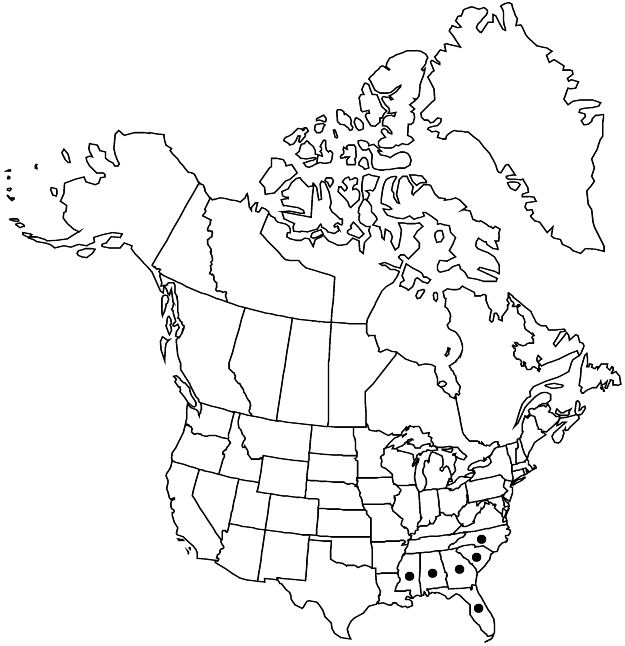Difference between revisions of "Crataegus mira"
Biltmore Bot. Stud. 1: 78. 1902.
FNA>Volume Importer |
imported>Volume Importer |
||
| (5 intermediate revisions by 2 users not shown) | |||
| Line 12: | Line 12: | ||
}}{{Treatment/ID/Special_status | }}{{Treatment/ID/Special_status | ||
|code=F | |code=F | ||
| − | |label= | + | |label=Illustrated |
}} | }} | ||
|basionyms= | |basionyms= | ||
| Line 18: | Line 18: | ||
|name=Crataegus alleghaniensis var. mira | |name=Crataegus alleghaniensis var. mira | ||
|authority=(Beadle) Lance | |authority=(Beadle) Lance | ||
| + | |rank=variety | ||
}} | }} | ||
|hierarchy=Rosaceae;Rosaceae subfam. Amygdaloideae;Rosaceae tribe Gillenieae;Crataegus;Crataegus sect. Coccineae;Crataegus (sect. Coccineae) ser. Apricae;Crataegus mira | |hierarchy=Rosaceae;Rosaceae subfam. Amygdaloideae;Rosaceae tribe Gillenieae;Crataegus;Crataegus sect. Coccineae;Crataegus (sect. Coccineae) ser. Apricae;Crataegus mira | ||
| Line 43: | Line 44: | ||
-->{{#Taxon: | -->{{#Taxon: | ||
name=Crataegus mira | name=Crataegus mira | ||
| − | |||
|authority=Beadle | |authority=Beadle | ||
|rank=species | |rank=species | ||
| Line 57: | Line 57: | ||
|publication title=Biltmore Bot. Stud. | |publication title=Biltmore Bot. Stud. | ||
|publication year=1902 | |publication year=1902 | ||
| − | |special status=Endemic; | + | |special status=Endemic;Illustrated |
| − | |source xml=https:// | + | |source xml=https://bitbucket.org/aafc-mbb/fna-data-curation/src/2e0870ddd59836b60bcf96646a41e87ea5a5943a/coarse_grained_fna_xml/V9/V9_1055.xml |
|subfamily=Rosaceae subfam. Amygdaloideae | |subfamily=Rosaceae subfam. Amygdaloideae | ||
|tribe=Rosaceae tribe Gillenieae | |tribe=Rosaceae tribe Gillenieae | ||
Latest revision as of 22:53, 5 November 2020
Shrubs, 20–30 dm. Stems: twigs ± flexuous, new growth olive green, pubescent, 1-year old reddish brown, pubescent, older dark gray-brown, glabrous; thorns on twigs straight or recurved, 2-years old dark gray-brown, slender, 3–4 cm. Leaves: petiole length 15–25% blade, winged distally, pubescent, sessile-glandular; blade broadly rhombic-elliptic to ± suborbiculate (at least some, usually), 2–3.5 cm, ± coriaceous, base attenuate, lobes 1–3 per side, more prominent young (anthesis), small, neat, and regular, sinuses shallow, lobe apex ± acute, margins crenate-serrate to serrate, teeth gland-tipped (prominent young), veins 3 or 4 per side, apex acute, abaxial surface glabrous, adaxial pilose young, glabrescent. Inflorescences 3–6-flowered; branches glabrous or ± pilose; bracteoles caducous, linear, margins usually stipitate-glandular. Flowers 20–25 mm diam.; hypanthium sparsely pilose or glabrous; sepals narrowly triangular, 5 mm, margins glandular-serrate, midvein sometimes prominent, abaxially sparsely pubescent; stamens 10 or 20, anthers cream or purple; styles 4 or 5. Pomes red or reddish orange, suborbicular, 9–15 mm diam., sparsely hairy; sepals patent-reflexed; pyrenes 4 or 5.
Phenology: Flowering Apr; fruiting Sep–Oct.
Habitat: Open brush
Elevation: 20–200 m
Distribution

Ala., Fla., Ga., Miss., N.C., S.C.
Discussion
The main range of Crataegus mira is the Florida panhandle to central Georgia, but it extends to the Carolinas and Alabama; the species is locally common.
Crataegus mira is most similar to C. aprica, C. sororia, and especially C. leonensis, but differs from them in its wider and often larger leaves, thinner inflorescence indumentum (than C. sororia), and larger flower size. The illustration depicts an unusually formed sessile-glandular bracteole.
Selected References
None.
